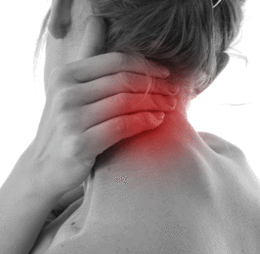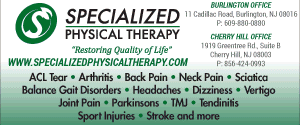
When the pain is unceasing, many patients give up hope. Fortunately, there are options.
Living with chronic pain is difficult on so many levels. Besides being physically challenging, it’s estimated that at least half of those that live with chronic physical pain also suffer from depression as a result. Many physicians suspect that number is much higher. In fact, one physician we spoke to estimated that as many as 90 percent of his chronic pain patients may also be suffering from depression. Whether it’s joint pain or arthritis, back or neck issues, fibromyalgia, or pain from another disease or condition, the fact is that pain can wreak havoc on one’s life. It can cause them to fall into a sense of hopelessness and despair. This is particularly true if they feel they’ve exhausted all of their options and are still in pain. While patients often believe they’ve tried everything, there are new treatments and therapies being developed all the time. Some have even found that there is still hope for a better life.
“Chronic pain can change your whole life,” says Dr. Gerald D. Hayken of Burlington County Orthopaedic Specialists of Mount Laurel. “People adopt what might be called ‘pain behavior,’ which includes depression, dependency, and drug addiction. The pain becomes pervasive and affects everything you do. It changes your outlook. Chronic pain patients often get to the point that they will try whatever they can to relieve the pain. This is what can—sometimes—lead to drug addiction or dependency.”
Depending on the source of the pain, there are a number of options out there but all too often, many people assume prescription drugs are the only answer. “I find that a lot of people simply don’t know what treatments are really out there,” says Dr. Adam Sackstein, medical director of The Pain Management Center, A Prospira PainCare Center of Excellence, which has several locations in South Jersey. “Some people think that their only choice is to begin narcotic therapy and they are afraid of that. There’s definitely a stigma attached to narcotic therapy and as a result some may not even pursue their options. But if they’d give it a chance they might realize there are often many options besides drug therapy.”
A Pain in the Neck—and Back
While there are many types of pain and many reasons behind the pain, neck and back pain are two of the most common. Sackstein says that is “far and away the largest group” seen at The Pain Management Center. Whether it’s the result of a work injury, a car accident, sports, or even just a genetic condition, neck and/or back pain can be debilitating. These conditions are not always easy to treat, but Sackstein says there is a broad spectrum of options.
“This practice does do medication management but our primary focus is interventional,” he says. “We do a lot of pain procedures that can range from trigger point injections to spinal canal injections, or even, at the far end, radiofrequency ablation [RFA] which uses an electrical current to heat up a small area of nerve tissue and decrease pain signals to that area.”
Hayken says that most of his chronic pain patients are also for the neck and back, though joint problems with the knee, hip, and shoulder are also major concerns. While most patients would like to avoid surgery, the surgical advances have come quite far these days and many patients find that surgery can decrease or eliminate their pain. Injections are also an option and there are always new drugs being tested that can offer some relief. The key is exploring the options and finding what’s right for you, Hayken says.
“Sometimes patients delay surgery or treatment because of that down period of recovery,” Hayken says. “But the longer a problem goes on, the harder it can be to treat and the more the pain will take over one’s life. While there are often good reasons to delay surgery or other treatments—such as taking care of a spouse or a loved one—choosing to live with pain is certainly not the ideal.”
Alternative Treatments
While traditional options like medication and surgical procedures work well for some patients, others prefer to seek alternative routes either to delay surgery or forgo it all together. Dr. Ken Cheng, co-owner of South Jersey Physical Therapy in Hainesport, says going this route may offer better outcomes in the long run.
“Some of the research I’ve been looking into says out of every 10 patients that go into surgery, five or six, and maybe even 70 percent, could have had the same or better outcomes with different treatment or physical rehabilitation,” he says. “Some people don’t even explore that route before they go into surgery. They want surgery now and they want it fixed. They don’t realize after surgery, you have a huge rehabilitative process where the body needs time to heal. They think you can have surgery and bounce back to life.”
Dr. Jesse Liebman of the Liebman Wellness Center in Marlton sees patients with neck and back pain above any other condition. Liebman feels that getting this type of pain under control can reduce the physical and mental consequences of long-term use of pain killers.
“Prescription drug addiction is epidemic in the United States,” Liebman says. “We are the number one consumer of pain killing drugs in the world. Long-term use of pain killers can adversely affect the stomach, kidneys, and liver, besides leading to addiction. Patients now have options that look to fix the cause of the pain and not merely hide the symptoms.”
Inflammation is typically a key factor behind pain, explains Liebman. That’s true whether it’s the back, neck, shoulder, knee, or another joint of the body. “Besides gentle chiropractic adjustments to lightly mobilize the inflamed body part, our office is also one of the first in the area to offer patients the M6 Robotic Cold Laser. This laser packs 25,000 MW of power, which is potent enough to shut down inflammation at its source. The laser causes no burning or pain at all and the patient regains normal range of motion, and diminished pain, usually after a couple laser sessions.”
Dr. Scott Greenberg of the Magaziner Center for Wellness in Cherry Hill, also sees a lot of pain patients who come in with neck and back problems. He also treats a number of patients with pain from concussions—including some of the Philadelphia Flyers. But Greenberg aims for an alternative approach and says that many of the patients that come to him are hoping to avoid surgery. Greenberg specializes in Prolotherapy (proliferative therapy)—also referred to as Sclerotherapy or Reconstructive Injection Therapy (RIT)—which is a non-surgical, orthopedic procedure to treat pain to tendons, joints, and ligaments caused by injury or arthritis.
Greenberg has also found great success through the use of stem cell therapy. He explains that stem cells are harvested from the body’s fat and injected into the areas that are damaged. “We’re finding it’s been successful for arthritic knees, hips, shoulders, and even rotator cuff tears,” Greenberg says. “We’ve had some very interesting cases and have even had success with patients who had back pain, went through a failed surgery, and were still in pain prior to receiving stem cell therapy. The power of these cells is unbelievable.”
One case of a patient with an arthritic shoulder and a rotator cuff that looked like it was “hanging on by a thread” sticks out in Greenberg’s mind. The patient was not a good candidate for surgery to repair the rotator cuff as there was “nothing to reattach.” Ultimately it seemed a shoulder replacement was her only option. But then she tried stem cell therapy. “Within nine weeks she could lift her arm above her head,” Greenberg says. “It was pretty incredible.”
The Clock is Ticking
Unfortunately many patients live with pain for long periods of time before finding the solution that was right for them. But the doctors we spoke with all urged that patients be more proactive about managing—or ideally, eliminating—their pain.
“The sooner we can see the patient the better,” says Dr. AJ Rastogi, founding partner of North American Spine & Pain in Hainesport. “If their pain has been around for a long time, it’s harder to treat. The pain issues can become ‘hard wired’ into the nervous system, so the outcomes and success rates go up the earlier we can see the patients.”
“Timing is so important,” Sackstein agrees. “Too often patients and physicians view pain management as a last resort and they don’t seek help until they’re completely miserable. But often, the sooner you start treating the problem, the higher the success rate. If you have pain and it’s not getting better, don’t just keep letting it go. You have nothing to lose by going for a consultation and at least finding out what treatment options are out there. Until you know all of your options, you can’t make a truly informed decision on what’s best for you.”
Published (and copyrighted) in South Jersey Magazine, Volume 11, Issue 6 September, 2014).
For more info on South Jersey Magazine, click here.
To subscribe to South Jersey Magazine, click here.
To advertise in South Jersey Magazine, click here.












